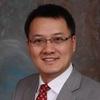Explore all the information on
Coccidiosis in poultry
Coccidiosis is a protozoal disease causing diarrhea, ,weight loss and decreased production in poultry. It can be fatal. Prevention is key and is achieved with use of anticoccidials or vaccination. Diagnosis is by fecal flotation to detect oocysts, often in combination with characteristic necropsy findings. Coccidiosis is caused by protozoa of the phylum Apicomplexa, family Eimeriidae. Most species affecting poultry belong to the genus Eimeria and infect various intestinal sites. The disease course is rapid (4–7 days) and is characterized by parasite replication in host cells with extensive damage to intestinal mucosa. Coccidia in poultry are generally host-specific, and the different species infect specific portions of the intestine. However, in game birds, including quail, the coccidia may infect the entire intestinal tract. In poultry, game birds reared in captivity, and wild birds, coccidiosis occurs worldwide.
The villi of the intestinal mucosa are lined by a single layer of columnar cells, comprising enterocytes, goblet and enteroendocrine cells, and various types of immune cells, each with a distinct function. Chicken gut mucosa is exposed to an enormous number of feed antigens, and pathogenic bacteria that often impair the intestinal barrier function. Ultrastructural examination of enterocytes, their organelles and other features, such as mitochondria, microvilli, and tight junctions sealing...
Comments : 1
Recommendations: 0
1. Introduction Food safety and economic gains are the priority consideration for food animal production industry. The antibiotic growth promoters (AGP) have been used in animal feed for decades to promote animal health and production. However, extensive use of antibiotics in animal agriculture led to increased concerns over antibiotic contamination in food and environment, and the emergence of antibiotic-resistant microorganisms. With the reduction and eventual withdrawal of...
Comments : 0
Recommendations: 0
Necrotic enteritis is the result of the overgrowth of Clostridium perfringens in the upper part of the intestines. Clostridum perfringens is a Gram-positive bacteria and forms spores that are extremely resistant to desiccation, heat, disinfectants, and UV radiation, and as a consequence, it is frequently present in poultry houses all around the world....
Comments : 4
Recommendations: 3
Greg Mathis (Southern Poultry Research) talked about the importance of letting birds develop immunity and the use of alternative anticoccidials, during IPPE 2020 in Atlanta, USA....
Comments : 1
Recommendations: 3
...
Comments : 0
Recommendations: 0
Caring for birds’ health is an essential factor in achieving good production levels. When diseases such as coccidiosis afflict birds, they cause physical losses for the flock and economic losses for producers. Recent estimates show that annual losses...
Comments : 2
Recommendations: 2
.jpg&w=3840&q=75)

Biodegradation of Mycotoxins: A Biotechnological Innovation for Safe Animal Feed
Suggested link
INTRODUCTION Coccidiosis is a major enteric disease of chickens that is caused by several distinct species of Eimeria protozoan parasites infecting different areas of the gut. Coccidiosis primarily damages epithelial integrity in the intestine decreasing nutrient utilization and resulting in an annual loss of over $3.2 billion in the poultry industry globally (1–3). With the onset of coccidiosis, Eimeria elicits a local inflammatory response in the intestine, increasing...
Comments : 0
Recommendations: 1
Poultry Immunity The poultry immune system is in many ways the “standard” vertebrate immune system, which is what makes it such a good model for immune research, though there are several key differences when compared to other agricultural species. Indeed, much of our fundamental understanding of immunology has come from the study of poultry, specifically chickens. Discoveries including retroviruses, oncogenes, interferon, vaccine...
Comments : 1
Recommendations: 1
Necrotic enteritis is the result of the overgrowth of Clostridium perfringens in the upper part of the intestines. Clostridum perfringens is a Gram-positive bacteria and forms spores that are extremely resistant to desiccation, heat, disinfectants, and UV radiation, and as a consequence, it...
Comments : 0
Recommendations: 2
Introduction Coccidiosis is an infectious disease of the intestinal tract of wild and domestic animals caused by different protozoa. These include but are not limited to Isospora, Neospora, Cryptosporidium, and Eimeria of the phylum Apicomplexa. Those parasites are widespread, especially where intensive production systems are used to raise livestock. They cause mortality, poor growth, and impaired performance. In addition to mortality and reduced growth, coccidiosis also affects...
Comments : 0
Recommendations: 1
INTRODUCTION
Coccidiosis is an enteric disease caused by protozoa of the genus Eimeria that affects several animal species, including poultry. Eimeria multiplication in the intestinal epithelium leads to enterocyte destruction and severe tissue damage, which negatively affects poultry health and welfare status (1). Although difficult to predict, researchers have estimated that the loss in productivity induced by clinical and...
Comments : 0
Recommendations: 0
...
Comments : 1
Recommendations: 0
I. INTRODUCTION Management of coccidiosis has traditionally been via medication or vaccination. Anticoccidial programmes typically comprise a chemical and an ionophore component. Ionophores are under increasing regulatory and consumer scrutiny for their antimicrobial activity. Coccidial vaccines comprise Eimeria strains that are either attenuated (typically via repeated passage) or nonpathogenic or unmodified strains of field isolates. Coccidial vaccines have been proposed to...
Comments : 1
Recommendations: 0
Dear Doctors, Please suggest which medicine should I follow in cocci in my layer bird of 24th week. Production is 87 percent. Daily mortality is around 35 birds. Please suggest on urgent basis. I am using supercox medicine from last 3 days but there is no improvement in birds.
Regards,
Manish. ...
Comments : 18
Recommendations: 0
Is a parasitic disease caused by protozoan of the genus Eimeria , affecting virtually all domestic and wild poultry species. The disease transmission is fecal-oral, by ingesting sporulated oocysts present in the litter, from faeces from infected birds, although a mechanical...
Comments : 34
Recommendations: 6
WHAT IS COCCIDIOSIS? Coccidiosis is the main parasitosis of poultry in South East Asia . Weather and farm conditions, management practices, together with the high prevalence of vectors in the region, such as Alphitobius , ease the survival and development of coccidia. Coccidiosis is a disease present in the poultry industry worldwide affecting the intestine and therefore, the growth and performance of birds. It is caused by protozoa of the genus...
Comments : 2
Recommendations: 0
...
Comments : 0
Recommendations: 0
Highlights from the conversation with Johan Van Erum, Derek Detzler, Maria Elena Rubio and Horacio Gamero, who joined Elizabeth Santin for this roundtable, during the 1st PoultryUniverse Coccidiosis Congress in Curitiba, Brazil....
Comments : 21
Recommendations: 3
Necrotic enteritis (NE) is one of the top enteric infectious diseases in commercial broiler chickens that is caused primarily by Clostridium perfringens (CP) A/G strains and responsible for around $6 billion economical loss worldwide. Coccidiosis is the major predisposing factor for NE. With gradual reduction and eventual withdrawal of antibiotic growth promoters from animal feed due to public and regulatory pressures, alternatives to antibiotic approaches assume top- priority for...
Comments : 0
Recommendations: 1




.jpg&w=3840&q=75)












.jpg&w=3840&q=75)

.jpg&w=3840&q=75)














